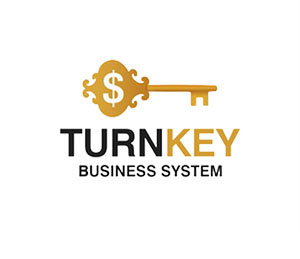Cybersecurity 2025: 9 Critical Threats and Methods to Protect Corporate Networks

Cybersecurity 2025: Protect Your Network Against 9 Critical Threats
In today’s world, where businesses rely heavily on technology, cybersecurity has become a cornerstone of protecting corporate data and infrastructure.
By 2025, companies will face new challenges and threats that demand proactive measures to safeguard their networks. Here are the nine most critical threats and actionable strategies to mitigate them.
By 2025, companies will face new challenges and threats that demand proactive measures to safeguard their networks. Here are the nine most critical threats and actionable strategies to mitigate them.

Cybersecurity 2025: 9 Critical Threats and Methods to Protect Corporate Networks
1. Misconfigured Perimeter Security Policies
What is it?A firewall acts as a gatekeeper for your network, deciding who gets in and who doesn’t. However, many firewalls are misconfigured, often allowing all traffic indiscriminately (rules like "allow everything to everyone"). Statistics show that 95% of successful attacks through firewalls occur due to improper configuration.
How to protect yourself?
Adopt the principle of "least privilege" — only allow what is absolutely necessary for operations. Use Next-Generation Firewalls (NGFW), which analyze not just IP addresses but also specific applications, protocols, and user actions.
2. Open Doors to the Internet
What is it?Many companies expose internal services directly to the internet, akin to leaving an office door wide open. For example, the Remote Desktop Protocol (RDP) is frequently left open, as seen in the 2021 Colonial Pipeline attack.
How to protect yourself?
Never expose internal services directly to the internet. Use secure tunnels like VPNs or specialized access gateways. Enable two-factor authentication (2FA), preferably via hardware tokens, to add an extra layer of security.
3. Email as a Favorite Weapon for Hackers
Why is this a problem?Email remains the primary vector for cyberattacks, with over 90% of breaches starting with phishing emails or malicious attachments. Vulnerabilities in email applications, such as those exploited in Microsoft Exchange in 2021, have led to widespread server compromises.
How to protect yourself?
Implement multi-layered protection: anti-spam and anti-phishing solutions that test attachments in isolated environments ("sandboxes"). Adopt email authentication standards like SPF, DKIM, and DMARC to verify sender authenticity. Train employees regularly to recognize suspicious emails.
4. Architectural Flaws: One Breach Opens Everything
What is it?Many companies fail to segment their networks into secure zones, making it easier for attackers to move laterally once inside.
How to protect yourself?
Adopt the Zero Trust principle: "Always verify." Divide your network into zones (e.g., public, guest Wi-Fi, internal). Use Web Application Firewalls (WAF) for web traffic and cloud-based DDoS protection. Implement micro-segmentation and Identity Firewalls to control access based on user roles.
5. Insider Threats: The Enemy Within
What is it?Even if perimeter defenses are strong, internal monitoring is often neglected. Hackers can remain undetected for months, stealing data. For instance, the Target breach occurred when hackers entered through a third-party HVAC vendor.
How to protect yourself?
Deploy internal traffic monitoring systems (IDS/IPS, NDR, SIEM). Use Network Access Control (NAC) technologies to verify every connected device. Secure Wi-Fi with WPA2/3-Enterprise and individual user authentication.
6. Human Error: Simple Mistakes with Serious Consequences
What is it?Basic mistakes by administrators, such as using default passwords or failing to enable two-factor authentication, can lead to catastrophic breaches.
How to protect yourself?
Change all default passwords to unique, complex ones. Use centralized account management and enforce 2FA on all remote access points. Consider Zero Trust Network Access (ZTNA) solutions that restrict access to specific applications rather than the entire network.
7. Outdated Software: An Open Door for Hackers
What is it?Unpatched systems contain known vulnerabilities that hackers exploit. For example, the WannaCry ransomware in 2017 exploited an old SMB protocol vulnerability.
How to protect yourself?
Maintain a regular update schedule for all hardware and software. Pay special attention to critical servers and IoT devices. Use vulnerability management systems to automate updates.
8. Hidden Attacks: Hackers Using System Utilities
What is it?Modern hackers increasingly use legitimate system utilities (LOLBins) like certutil and regsvr32 to execute malicious activities without raising suspicion.
How to protect yourself?
Deploy behavior-monitoring systems (EDR/NDR) that detect abnormal usage of system utilities, unusual network requests, or suspicious command-line parameters.
9. Specialized Data Protection Systems
What are they?Specialized systems monitor and protect critical data in real-time. Key technologies include:
DAM (Database Activity Monitoring): Tracks all database actions and blocks suspicious SQL queries.
DLP (Data Loss Prevention): Analyzes network traffic to prevent data leaks.
NDR (Network Detection and Response): Uses AI to identify anomalies in network behavior.
SIEM (Security Information and Event Management): Centralizes logs from all devices for comprehensive security oversight.
Key Steps to Building a Secure Network
Conduct an inventory of all devices, services, and protocols in the network.
Identify vulnerabilities: weak passwords, open services, outdated software.
Implement a multi-layered defense strategy based on Zero Trust principles.
Establish continuous monitoring and incident response mechanisms.
Cybersecurity is not a one-time task but an ongoing process. As hackers evolve, so must our defenses. By following these principles—proper firewall configuration, network segmentation, two-factor authentication, regular updates, and constant monitoring—you can significantly reduce the risk of successful attacks and protect your organization from modern cyber threats.
Remember: While 100% security is impossible, a well-planned approach can make your company too costly a target for most attackers.
Remember: While 100% security is impossible, a well-planned approach can make your company too costly a target for most attackers.









Report
My comments